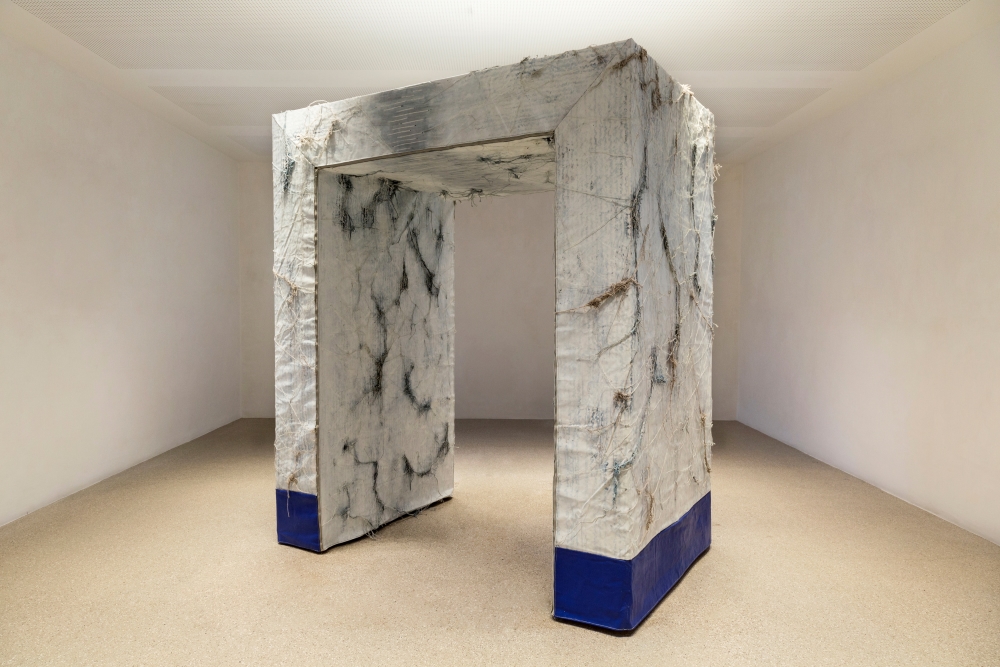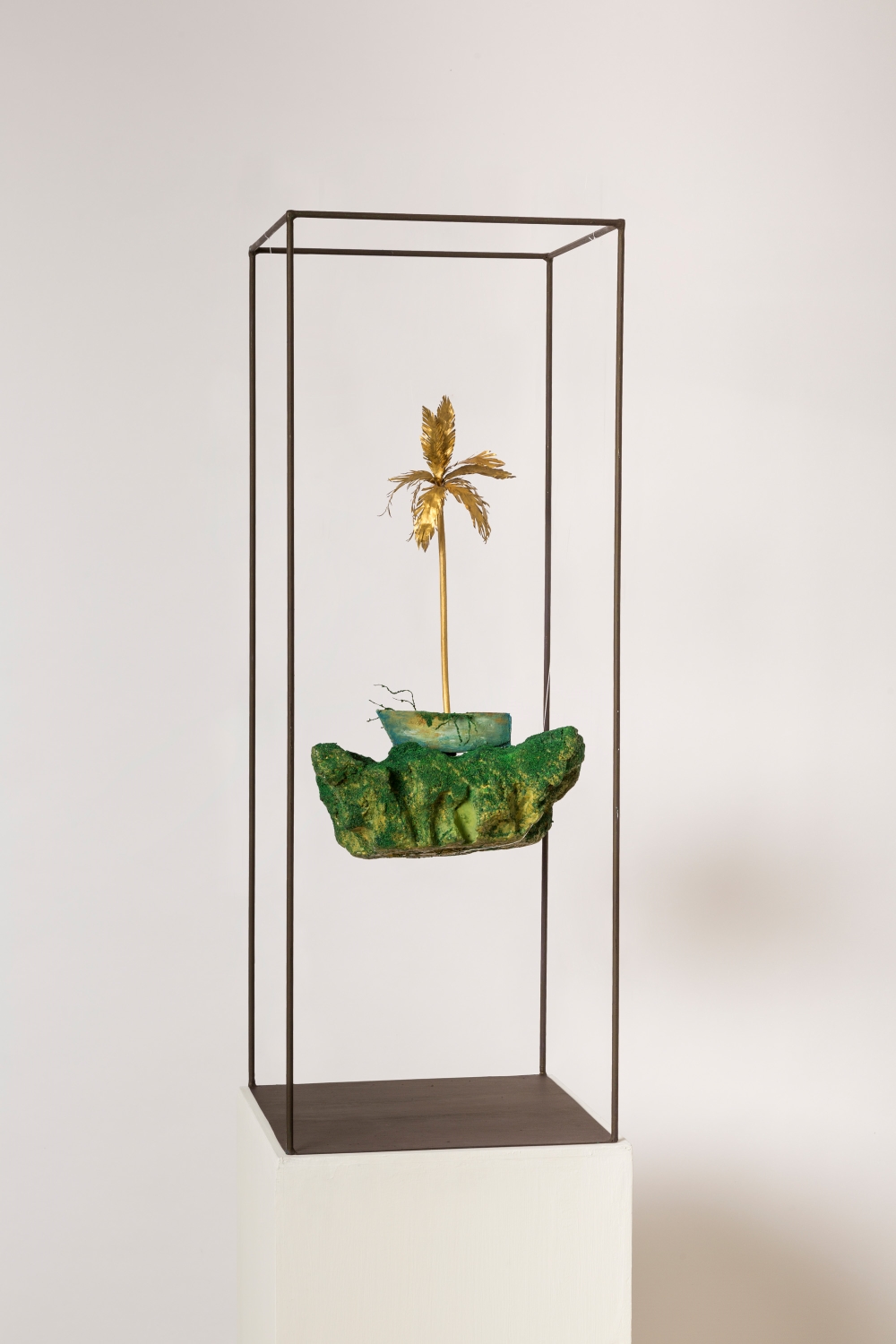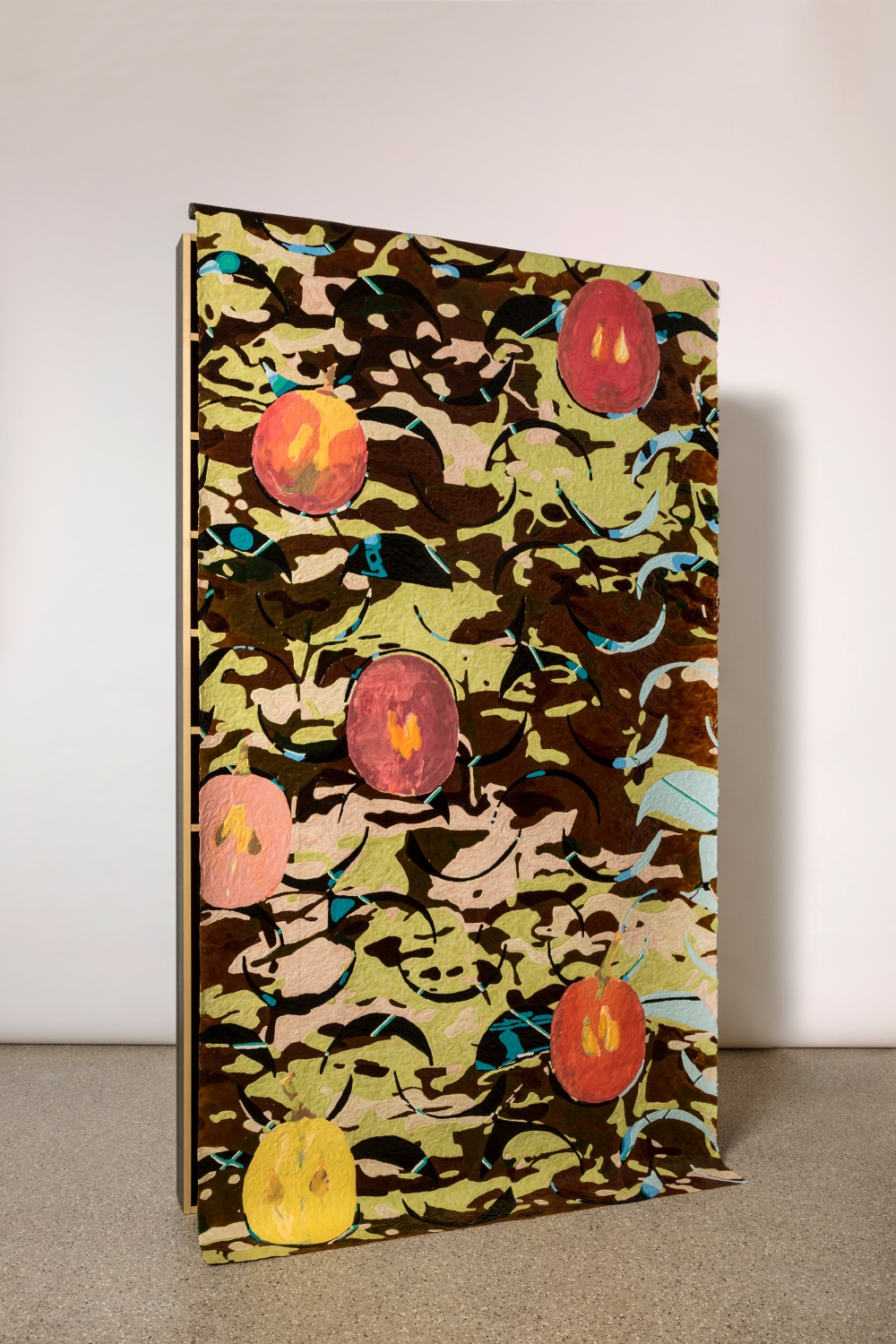
A revealing story about art and migration
An express-interview with Marion Eele, one of the curators of the travelling exhibition Don't Ask Me Where I'm From
09/12/2019
The travelling exhibition Don't Ask Me Where I'm From (December 6 - February 2), with a first stop at Gaellerie delle Prigioni in the Italian city of Treviso, is a very candid story about art and migration. It features 15 artists from a wide variety of countries whose work is based on their own personal experience – artists who are immigrants themselves, either first, second, or third generation. The exhibition provides very direct and personal insight into the multifaceted mosaic that makes up the modern world, one in which traditions, cultures, languages, identities, historical traditions, new ideas, passions and even conflicts all coexist. The exhibition is the story of how local becomes global, and how personal becomes political; it is about the role of artists as cultural mediators in the controversy-filled world of the 21st century. It also asks such a seemingly simple yet fundamental question: What does it really mean to be from ‘somewhere’?
The exhibition is a collaboration between the Benetton Foundation’s Imago Mundi and the Aga Khan Museum in Toronto. Luciano Benetton, the president of Fondazione Imago Mundi, states in the press release for the exhibition: ‘I believe the theme of the new generations of artists living in countries that are not their land of origin is an important field of exploration that draws attention to migrations. The history of the world is the story of migrant women and men, and of children born in new homelands.’
The Fondazione Imago Mundi Collection contains more than 26,000 works by artists representing 160 countries. The selecting of artists for the exhibition was done by a special panel of experts consisting of curators, museum directors, and artists. The project has two curators, Marion Eele (Imago Mundi) and Marianne Fenton (Aga Khan Museum), and presents a wide variety of art mediums – from painting to photography, video and installations. Shortly before the opening of the exhibition, Arterritory.com invited one of the curators, Marion Eele, to tell a little more about the show!

Farihah Aliyah Shah, Looking for Lucille, 2017–2019. Photographic prints, archival material, textiles, sound installation
Since summer 2015, the ‘migrant crisis’ has become somewhat of a ‘hot topic’ in the art world. Can a work of art create a welcome? Does it have the power to educate, to change attitudes towards migration?
I think that the arts – and that includes visual art, music, theatre, dance, etc. – all have huge potential to educate and change attitudes. Just look at Berlin’s Ballhaus Naunynstraße, known as the ‘post-migrant theatre’, which Moritz Schramm, a scholar who has written widely about migration, diversity, and the arts, highlights in an essay written to accompany this exhibition. In it, he discusses how this theatre changed opinions in the city, saying: ‘Designed as a means of critical intervention, the concept of the post-migrant theatre contributed to the empowerment of minoritized people as well as the rejection of ascribed identities and processes of othering.”
And look also at Imago Mundi, the project promoted by Luciano Benetton which is behind this exhibition, together with the Aga Khan Museum: involving more than 26,000 artists from over 160 countries, Imago Mundi testifies how art can succeed in being a powerful incubator of integration and in exploring pathways of dialogue and understanding.
However, this potential to educate cannot be taken as an alternative to political and structural change to combat prejudice and isolationism: the two must come together.
It is also worth pointing out that rather than looking at the first-generation stories of the so-called ‘migrant crisis’, the focus of this project since its inception has been post-migrant artists: that is, second or third generation immigrants – those who have grown up in a different culture to that of their parents or grandparents. This decision was made for a number of reasons. Firstly, to show a different side to the stories seen in the news – one that was further-reaching and looks more to the future. Secondly, to explore the role of the artist as mediator, especially those whose roots span multiple cultures. Thirdly, to provide a platform that fosters dialogue and to tell more personal stories that show post-migrant artists as individuals, not statistics. This is not a definitive study into art and migration, but rather a collection of narratives that position themselves as radical acts of representation.
The exhibition consists of artworks created by 15 artists of different generations and countries. Could you briefly describe the process of how the artists were selected?
The process for selecting the artists was an interesting one, which I think ties in nicely with the values of both Fondazione Imago Mundi and the Aga Khan Museum, as well as the themes of the exhibition. To reflect the complexity of the topic, we were keen to have as wide a range as possible of backgrounds, ages, mediums, and so on. To achieve this, we knew we needed to bring in a broad base of knowledge, so we worked with nominators around the world – curators, art critics, teachers at art schools – to use their local expertise. We could rely on the broad network of international, valuable contacts that both Imago Mundi and the Aga Khan Museum have developed since their beginning. From there, we built a long-list of artists to approach, and narrowed it down based on what they proposed for the project.

Shinpei Takeda
Is art a universal language that speaks to all of us? Can art really transcend national and cultural borders?
I think lots of things can transcend national and cultural borders – these boundaries are, after all, just human constructs. Art is just one of these things. While I think we should be wary of expecting art alone to be able to fix the world’s problems, I certainly think it has a role to play in education and creating visibility. In working on this exhibition, it was fascinating to see the similarities both in the themes of the works and in the way that the artists spoke about their experiences. Even from artists living in very different realities, there were a surprising number of overlaps.
With that being said, even if art can be seen as a universal language, it is one that each person understands in a different way. We all experience art from within our own unique personal context, which is informed not only by the country we call home, but also countless other factors, right down to how we’re feeling that day. In fact, as curators, Marianne Fenton, the co-curator from the Aga Khan Museum side, and I are really interested in those different contexts, especially as this exhibition travels to different countries and continents. I’m certain that details we didn’t even consider will appear, and I hope they will start some interesting conversations.
For many artists, their own migrations and those of their ancestors shape their identities and the art they produce. Does migration generate creativity?
A number of well-regarded studies have shown that – contrary to what certain right-wing media and politicians would have people believe – migration actually drives economic production. Is it that much of a stretch then to imagine that it could also drive creative and cultural production? Certainly many of the artists in this exhibition have spoken about how vital it has been to their artistic processes.
However, it is also important to note that even in countries with high levels of immigration, like the UK, Canada and the USA, second-generation migrants and people of colour still face far more barriers (financial, educational, social) that make entry into the art world more difficult, as can be seen in figures on art school attendance, participation in exhibitions, and gallery representation. Once again, while celebration is important, we also need to push for wider structural change.

Houda Terjuman, The Road Less Taken, 2019. Sculpture
What are the main lessons you learned about migration while working on this exhibition?
One thing that has really struck me is how we need better language to talk about migration and national identity, and all the complexities involved. In this exhibition we use ‘post-migrant’ as an umbrella term to mean anyone who has grown up in a culture other than that of their parents, but even the use and meaning of that term are debated. We went back and forth with different terminology – second-generation, migrants, third-culture, diasporic – but none of these definitions were quite right, as they seemed either too vague or too specific. Working in two languages (English and Italian) only compounded the problem. Not having the proper language to describe someone or something can often lead to misrepresentation or erasure, so it certainly seems like some new terminology is needed.
Is the question ‘Where are you from?’ still relevant in the world we’re living in right now?
I think it all comes down to context. We asked the participating artists in this show about their opinions on this question, and most of them agreed that while it can sometimes be relevant, in their experiences, it more often is used as a way to dismiss, arbitrarily classify, or ‘other’ someone. This is especially true when it is phrased as ‘Where are you really from?’ – implying that they couldn’t possibly be from the place where they were born, brought up, and call home. Obviously, this is pretty insulting and potentially dangerous. Anyone wanting to ask the question should first stop and ask themselves, ‘Why do I want to know?’ ‘Am I disregarding a previous answer based on appearance?’ ‘Is it appropriate to ask this right now?’ and ‘Is there a more polite way to ask?’
Could you name three artworks (and the stories behind them) that one definitely should not miss, i.e. the key works of this exhibition?
It’s very difficult for me to choose just three, as each of the works in this show adds something unique and has an interesting story behind it! However, these works show something of the variety amongst the techniques and backgrounds of the artists involved.
eL Seed

eL Seed, Chez Nous, Là-Bas!, 2019. Calligraffiti on wooden panels
eL Seed has spoken often about how his dual French-Tunisian identity has been crucial to the development of his unique style of ‘calligraffiti’, which combines Arabic calligraphy with street-art style. Having created works across the globe, from the DMZ between North and South Korea to the favelas of Rio de Janeiro, we’re very excited to have a brand-new commission from him in this show, entitled Chez-Nous Là-Bas!
Sukaina Kubba

Sukaina Kubba, Mal de Debarquement, 2019. Painted latex
Sukaina works in a number of mediums, and recently has been creating amazing pieces in painted latex, which has a completely unique quality. For this show, she has made a latex curtain or rug called Mal de Debarquement – which is like motion sickness but when you’re still – and which references, among other things, a 14th-century Arabic folk story. I love the way she has combined such wide-ranging themes and influences that reflect her own history and wider trends into a single, very striking object.
Liberty Battson

Liberty Battson, The Power of Perception, 2019. Wood, automotive paint
I want to highlight this work because I love how Liberty has approached the theme in a completely unique way. By making her work interactive, and allowing visitors to create their own arrangements of the colourful prisms, she encourages people to think about their own histories, prejudices, opinions, and more. Self-reflection is certainly something we’re hoping to encourage in this exhibition.
Artists: Daniela Edburg: Mexico; USA, eL Seed: France; Tunisia, Elena El Asmar: Italy; Lebanon, Erica Kaminishi: Japan; Brazil; France, Farihah Aliyah Shah: Canada; Guyana, Gui Mohallem: Brazil; Lebanon, Jeanno Gaussi: Germany; Afghanistan, John Young Zerunge: Australia; China, Hong Kong, Houda Terjuman: Morocco; Syria; Switzerland, Liberty Battson: South Africa; Zimbabwe, Marija Nemcenko: Lithuania; Russia; UK, Sarah Maple: UK; India, Shinpei Takeda: Mexico; Japan; Germany, Sukaina Kubba: Iraq; Canada, Thenjiwe Niki Nkosi: USA; South Africa; Turkey